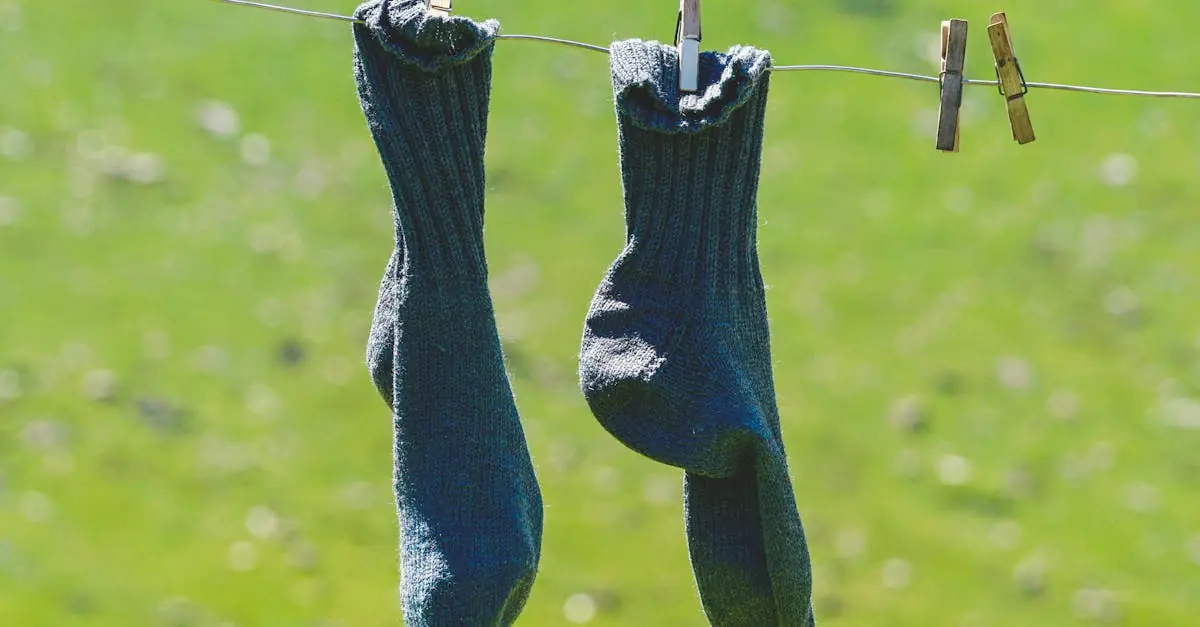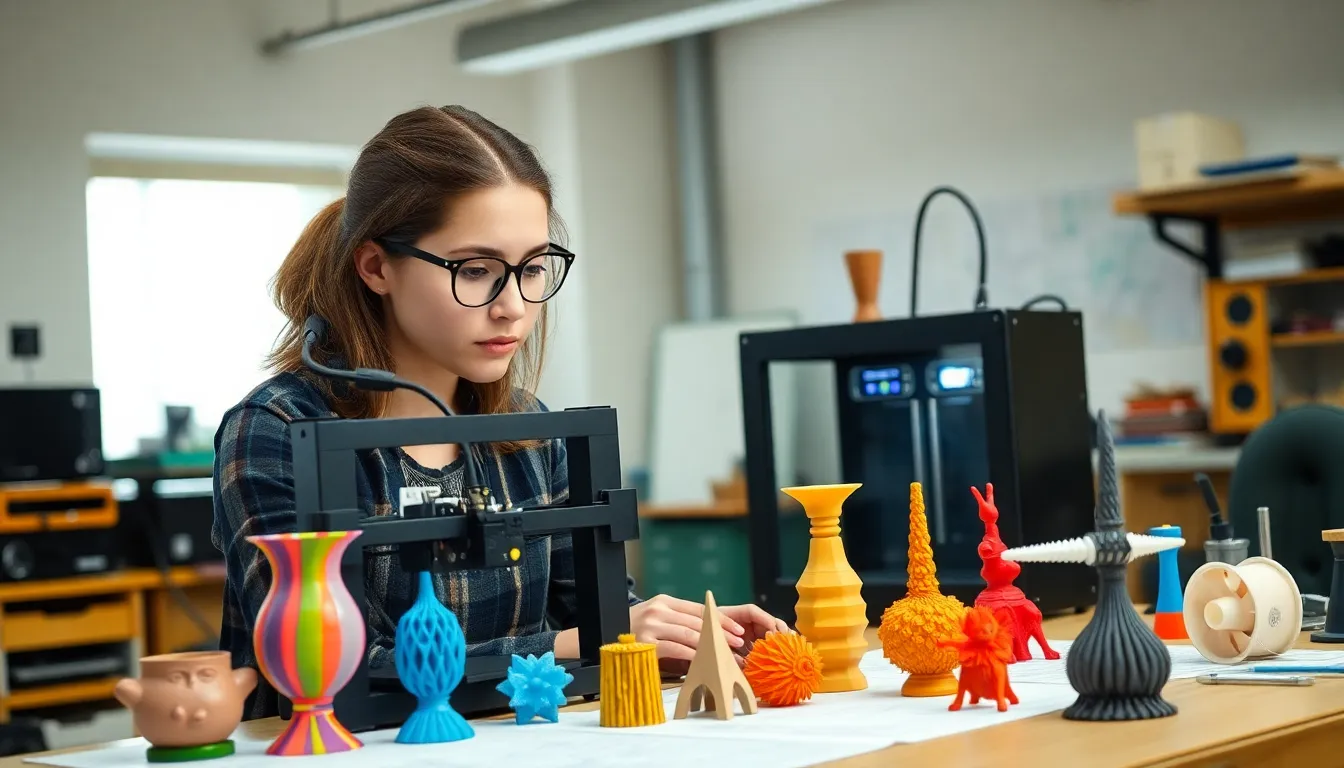When it comes to 3D printing, moisture is the enemy. Filament can soak up humidity faster than a sponge in a rainstorm, leading to prints that resemble a Picasso painting gone wrong. But fear not! There are effective filament drying methods that can save the day and your precious prints.
Overview of Filament Drying Methods
Filament drying methods play a crucial role in 3D printing quality. Various techniques help eliminate moisture from filament, ensuring optimal performance.
One common method involves using a dedicated filament dryer. These devices utilize controlled heat and airflow to remove moisture, thereby preventing bubbles and defects during printing. Many filament dryers have customizable temperature settings, allowing for specific filament types such as PLA, ABS, and PETG.
Another popular option is using a conventional oven. It offers a simple, effective approach to drying filament. The process requires setting the oven to a low temperature, typically around 50-60°C, and placing the filament on a baking sheet. This method should only be used with caution, as excessive heat can damage the filament.
Desiccant containers also serve as an effective drying method. By placing filament spools in containers filled with desiccant like silica gel, moisture naturally absorbs over time. This passive method works well for long-term storage but may not provide immediate results.
Vacuum sealing provides a different approach. Vacuum-sealed bags prevent moisture from entering, offering a protective environment for filament. While this method is effective for preservation, it may require additional drying techniques before printing.
Using a food dehydrator is another viable option. This appliance circulates warm air and efficiently removes moisture from filament. Many users find it easier to control compared to ovens.
Overall, each of these methods has unique advantages. Prioritizing effective moisture removal ensures high-quality prints and successful projects.
Importance of Proper Filament Drying
Proper filament drying is essential for achieving high-quality 3D prints. Moisture can lead to significant issues during the printing process and compromise the durability of finished products.
Effects on Print Quality
Damp filament can cause clogs in the nozzle during printing. Additionally, moisture may lead to surface defects, such as stringing or blobbing, which detract from the print’s overall aesthetics. Prints may also exhibit weak layer adhesion, resulting in structural failures. Inconsistent extrusion often occurs when filament absorbs moisture, causing variations in diameter. Such inconsistencies lead to unpredictable results and lower the quality of the final print. Ensuring proper drying eliminates these issues and promotes reliable performance throughout the printing process.
Impact on Material Properties
Moisture affects the inherent properties of the filament. When filament absorbs water, it becomes softer and more malleable, altering its rigidity. Increased brittleness often develops, making the material more susceptible to breakage during handling or printing. The absorption process also impacts thermal properties, affecting the filament’s melting point. Consequently, this leads to difficulty in achieving optimal printing temperatures and proper layer bonding. Maintaining low moisture levels ensures that the filament retains its intended characteristics and performs optimally in various applications.
Common Filament Drying Methods
Filament drying methods vary, each offering unique benefits for effective moisture removal.
Oven Drying
Oven drying remains popular among enthusiasts. Setting an oven to a low temperature of about 160°F (70°C) effectively evaporates moisture from filament. This method ensures even heat distribution, allowing the filament to dry uniformly. Many opt for this technique since it provides quick results, usually within a couple of hours. It’s crucial to monitor the temperature to avoid damaging the filament, especially thermoplastics. Using an oven offers a practical solution for those needing immediate access to dry filament.
Desiccant Drying
Desiccant drying entails using moisture-absorbing materials like silica gel. This method works well for long-term filament storage. Placing filament in airtight containers filled with desiccants ensures moisture levels drop significantly. Many users appreciate this method for its simplicity and effectiveness. Maintaining a dry environment with desiccants protects filament from moisture absorption during storage. It’s an excellent strategy for those who print infrequently yet want to preserve filament integrity.
Vacuum Drying
Vacuum drying involves using a vacuum chamber to lower pressure and remove moisture from filament efficiently. This process effectively extracts trapped water molecules, ensuring dry filament for printing. Users often favor this method for its ability to handle various filament types, including nylon and PETG, which require more rigorous drying. The vacuum environment promotes rapid drying without applying excessive heat, preserving filament characteristics. This method is ideal for individuals looking for maximum drying efficiency and quality.
Hot Air Drying
Hot air drying utilizes a specialized device that circulates warm air around the filament. This approach accelerates moisture evaporation, making it effective for quick drying. Many choose hot air drying for its ability to accommodate multiple filament rolls simultaneously, maximizing efficiency. The gentle heat evenly dries the filament while minimizing the risk of deformation. Hot air drying becomes a practical option for those seeking a balance between speed and effectiveness in filament drying.
Comparison of Drying Methods
Different filament drying methods vary in their efficiency and cost-effectiveness, impacting the decision-making process for users.
Efficiency and Time Considerations
Oven drying excels in speed, often completing the drying process within an hour. Hot air drying circulates warm air, achieving similar results while minimizing risks of deformation. Vacuum drying quickly removes moisture but may require equipment setup time. Desiccant drying, while gentle on filament, can extend drying times significantly, sometimes taking several days for optimal results. Users seeking immediate solutions often prefer options that provide quick drying, such as ovens or hot air methods.
Cost Analysis
Oven drying proves to be a cost-effective choice as many households have ovens, incurring minimal additional expenses. Conversely, dedicated filament dryers may involve higher upfront costs but offer energy efficiency in the long run. Desiccant containers require an initial investment in silica gel, with ongoing costs for replacements. Vacuum drying systems involve purchasing specialized equipment, leading to a higher overall cost. Users must consider both initial investment and potential long-term expenses when deciding on a drying method.
Conclusion
Effective filament drying is crucial for achieving high-quality 3D prints. By choosing the right drying method, users can significantly enhance print quality and prolong the lifespan of their filament. Each drying technique offers unique benefits tailored to different needs and budgets.
Whether opting for the speed of oven drying or the gentle approach of desiccant storage, maintaining low moisture levels ensures optimal filament performance. As 3D printing continues to evolve, understanding and implementing effective drying methods will remain essential for both hobbyists and professionals alike. Prioritizing moisture control ultimately leads to better prints and more successful projects.













